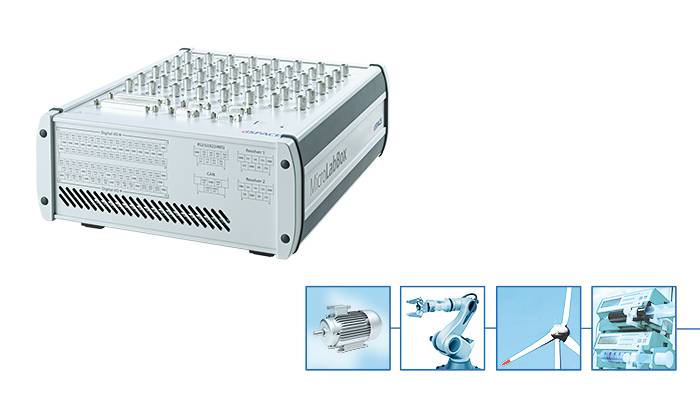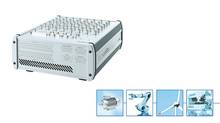MicroLabBox
Compact prototyping unit for the laboratory
MicroLabBox is an all-in-one development system for the laboratory that combines compact size and low system costs with high performance and versatility.
-
MicroLabBox Video
Explore MicroLabBox!
-
Press Release: Paderborn, February 11, 2015:
dSPACE has introduced a new, compact control system development platform for laboratory use, MicroLabBox, that offers high computing power and comprehensive functionalities. MicroLabBox makes creating, optimizing and testing controllers, and implementing data acquisition applications easy and cost-efficient for both industry and academia.
Read more
-
Compact power in the lab
With MicroLabBox, dSPACE introduces an entirely new system – a compact development system for laboratory use that is very powerful and versatile, despite its low system costs and small size. Over 100 channels of different I/O types and a combination of real-time processor and FPGA provide the versatility needed in research and development. This lets you implement control, test and data acquisition applications quickly, simply and costeffectively.
- 2 GHz dual-core real-time processor and user-programmable FPGA
- More than 100 channels of high-performance I/O with easy access via integrated connector panel
- Dedicated electric motor control features and interfaces for Ethernet and CAN bus
Application Areas
MicroLabBox lets you set up your control, test or measurement applications quickly and easily, and helps you turn your new control concepts into reality. More than 100 I/O channels of different types make MicroLabBox a versatile system that can be used in mechatronic research and development areas, such as robotics, medical engineering, electric drives control, renewable energy, vehicle engineering, or aerospace.
Key Benefits
High computation power combined with very low I/O latencies provide great real-time performance. A programmable FPGA gives you a high degree of flexibility and lets you run even extremely fast control loops, as required in applications such as electric motor control or active noise and vibration cancellation.
MicroLabBox is supported by a comprehensive dSPACE software package, including, e.g., Real-Time Interface (RTI) for Simulink® for model-based I/O integration and the experiment software ControlDesk, which provides access to the real-time application during run time by means of graphical instruments.
MicroLabBox, top panel variant with spring-cage terminal blocks
Versatility through Connector Panel Variants
MicroLabBox is available in three connector panel variants, offering different types and/or positions of the I/O connectors. The front panel variant provides Sub-D connectors at the front to access the connectors of the MicroLabBox when it is included in a stack of laboratory equipment or easily switch between wire harnesses. The top panel variant is available with two different connector types and is ideal for desk use.
Equipped with BNC and Sub-D connectors, the top panel MicroLabBox allows easy access to the analog I/O channels via probes that are typically used in laboratories to offer high analog signal quality. Additionally, a top panel variant with spring-cage terminal blocks, which are often used in industrial automation, is available. This means, signal connections can be changed very fast and conveniently by means of a common push-in and release mechanism of the clamp with a standard screwdriver. To make wiring and signal tracing as user-friendly as possible, all panel variants show the pinout information on the unit itself. The pinout information is also displayed in the I/O blocks of the implementation software Real-Time Interface (RTI).
Overview of MicroLabBox variants: Front-panel variant (left), Top-panel variant (right)
| Parameter | Specification 1 | Specification 2 | Specification 3 |
|---|---|---|---|
| MicroLabBox Variants | Front Panel Variant | Top Panel Variant with BNC Connectors | Top Panel Variant with Spring-Cage Terminal Blocks |
| Processor |
|
|
|
| Interfaces |
|
|
|
| Analog input |
|
|
|
| Analog output |
|
|
|
| Digital I/O |
|
|
|
| Electric motor control I/O functionality |
|
|
|
-
- View online
- Download
Drive innovation forward. Always on the pulse of technology development.
Subscribe to our expert knowledge. Learn from our successful project examples. Keep up to date on simulation and validation. Subscribe to/manage dSPACE direct and aerospace & defense now.


